Molecular basis for assembly and activation of the Hook3 - KIF1C complex-dependent transport machinery
- PMID: 40312563
- PMCID: PMC12152161
- DOI: 10.1038/s44319-025-00458-w
Molecular basis for assembly and activation of the Hook3 - KIF1C complex-dependent transport machinery
Abstract
Microtubule-associated cargo transport, a central process governing the localization and movement of various cellular cargoes, is orchestrated by the coordination of two types of motor proteins (kinesins and dyneins), along with diverse adaptor and accessory proteins. Hook microtubule tethering protein 3 (Hook3) is a cargo adaptor that serves as a scaffold for recruiting kinesin family member 1C (KIF1C) and dynein, thereby regulating bidirectional cargo transport. Herein, we conduct structural and functional analyses of how Hook3 mediates KIF1C-dependent anterograde cargo transport through interaction with KIF1C and PTPN21. We verify the interactions among the three proteins and determine the crystal structure of the Hook3(553-624) - KIF1C(714-809) complex. Subsequent structure-based mutational analysis demonstrates that this complex formation is necessary and sufficient for the interaction between the full-length proteins in HEK293T cells and plays a key role in Hook3- and KIF1C-mediated anterograde transport in RPE1 cells. Thus, this study provides a basis for a comprehensive understanding of how Hook3 cooperates with other components during the initial steps of activation and assembly of the Hook3- and KIF1C-dependent cargo transport machinery.
Keywords: Hook3; KIF1C; PTPN21; Structure; Transport.
© 2025. The Author(s).
Conflict of interest statement
Disclosure and competing interests statement. The authors declare no competing interests.
Figures
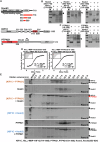
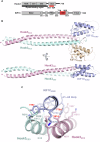


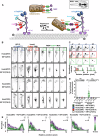
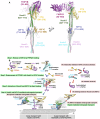



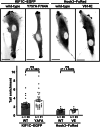

References
-
- Abid Ali F, Zwetsloot AJ, Stone CE, Morgan TE, Wademan RF, Carter AP, Straube A (2025) Cryo-EM structure of Fts-Hook3-FHIP1B at 3.2 Å resolution (https://www.rcsb.org/structure/8QAT). [DATASET]
MeSH terms
Substances
Grants and funding
LinkOut - more resources
Full Text Sources

